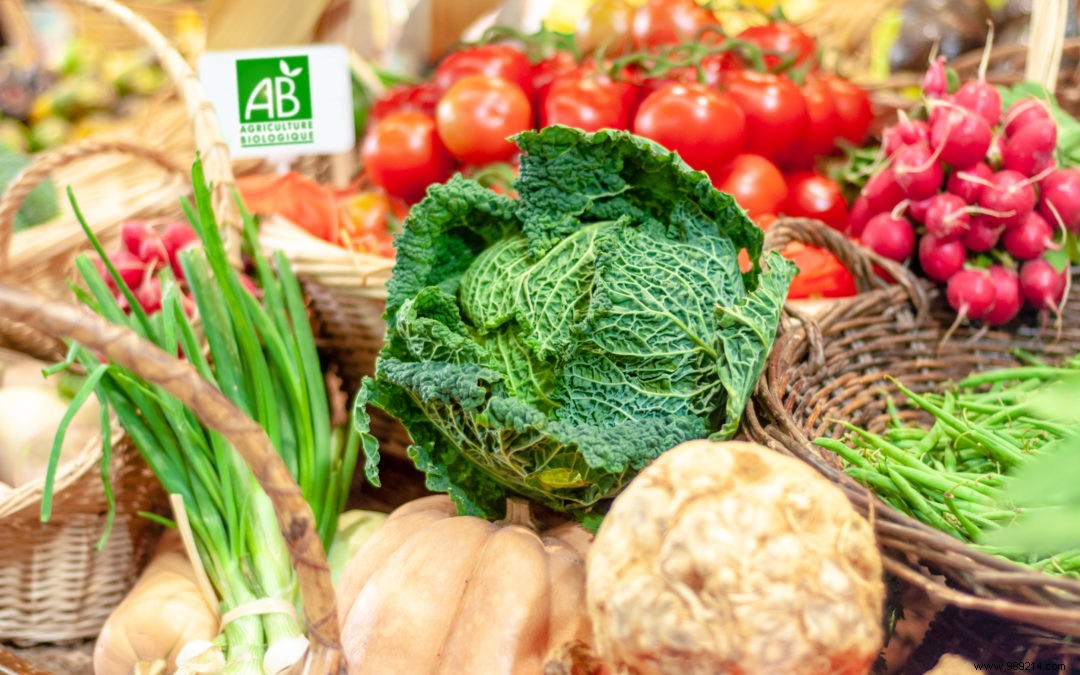
In a special issue published this summer, the magazine 60 million consumers, which analyzed more than 130 labeled products, explains that organic foods are not free of pollutants and sugars. They are also not always ethically produced.
A real card. "In twenty years, organic food has become a staple on our plates", underlines the magazine 60 million consumers in its special special issue of organic labels published in July. With more than 8 billion euros of organic food products purchased in 2017 (17% more than in 2016), we are now far from a mere fad. The details of these figures provided by the Agence bio (French agency for the development and promotion of organic farming) also reveals that in 2018, more than nine out of ten French people declared that they had consumed this type of food. Nearly 75% ate it at least once a month and 12% every day. This success can be explained by the desire of consumers to adopt a healthier and more environmentally friendly diet. But are they really right to place all their hopes in organic labels? To find out, 60 million consumers screened more than 130 labeled consumer foods. Verdict:only fruits and vegetables would be trustworthy (even if they are not perfect) with a special mention for apples and bananas.
Little restrictive organic labels
“At a time when food scandals are on the rise, the logo (in particular AB – organic farming – and the label with the stars of the European Union, editor’s note) is the Holy Grail. However, it is far from flawless, underlines Christelle Pangrazzi, deputy editor of the magazine. If the organic charter guarantees a restricted use of pesticides, it authorizes the same residual thresholds as in the conventional one. Similarly, although it may reduce the number of additives, it allows the use of sodium nitrites, recognized carcinogens, in charcuterie. Another point raised:consumers very often underestimate the caloric value of organic food compared to that of other products:“A spread, organic or not, is above all fat and sugar! “recalls the magazine. Not to mention snack cakes and appetizers, pizzas and cooked dishes, most of which are as fatty as non-organic ones.
Same thing from an environmental point of view:the organic label accepts the use of palm oil in the manufacture of the products it certifies while we know well the ravages of its production on the Southeast Asian forests. While the organic pioneers wanted a return to human-sized farms with crop rotations to respect biodiversity, some producers are now turning to monocultures deployed on huge plots. Result:the "excessive tillage" that takes place on these lands "destroys the microfauna of the soil and uses polluting motorized machinery". And what about the considerable carbon impact of off-season organic fruit imported from distant countries and the exploitation of immigrant workers in the fields, particularly in Spain and Italy?
No pesticides above the authorized thresholds
Anyway, a product stamped AB still offers better guarantees than conventional products:the presence of pesticides is very limited and GMOs are almost absent. Of the 130 organic products studied, none contained pesticide residues beyond the authorized thresholds. But the investigation still noted "the presence of polychlorinated biphenyls (PCBs) and dioxins in organic eggs and milk", say the journalists. This is due to the fact that the labels do not control the cultivated soils. However, there are sometimes polluting substances accumulated over the years.
In the end, 60 million consumers advise giving preference to the new, more demanding labels, such as Bio Cohérence, Nature et Progrès, Demeter or Biodyn. As for brands, the magazine particularly recommends Biocoop, one of the last to have remained independent. And to conclude:"even more than eating organic with your eyes closed, the most effective steps to protect the environment and its health consist in increasing its consumption of fruit and vegetables by favoring local and seasonal products, in reducing its consumption of meats and charcuterie and to limit ultra-processed products”. CQFD.